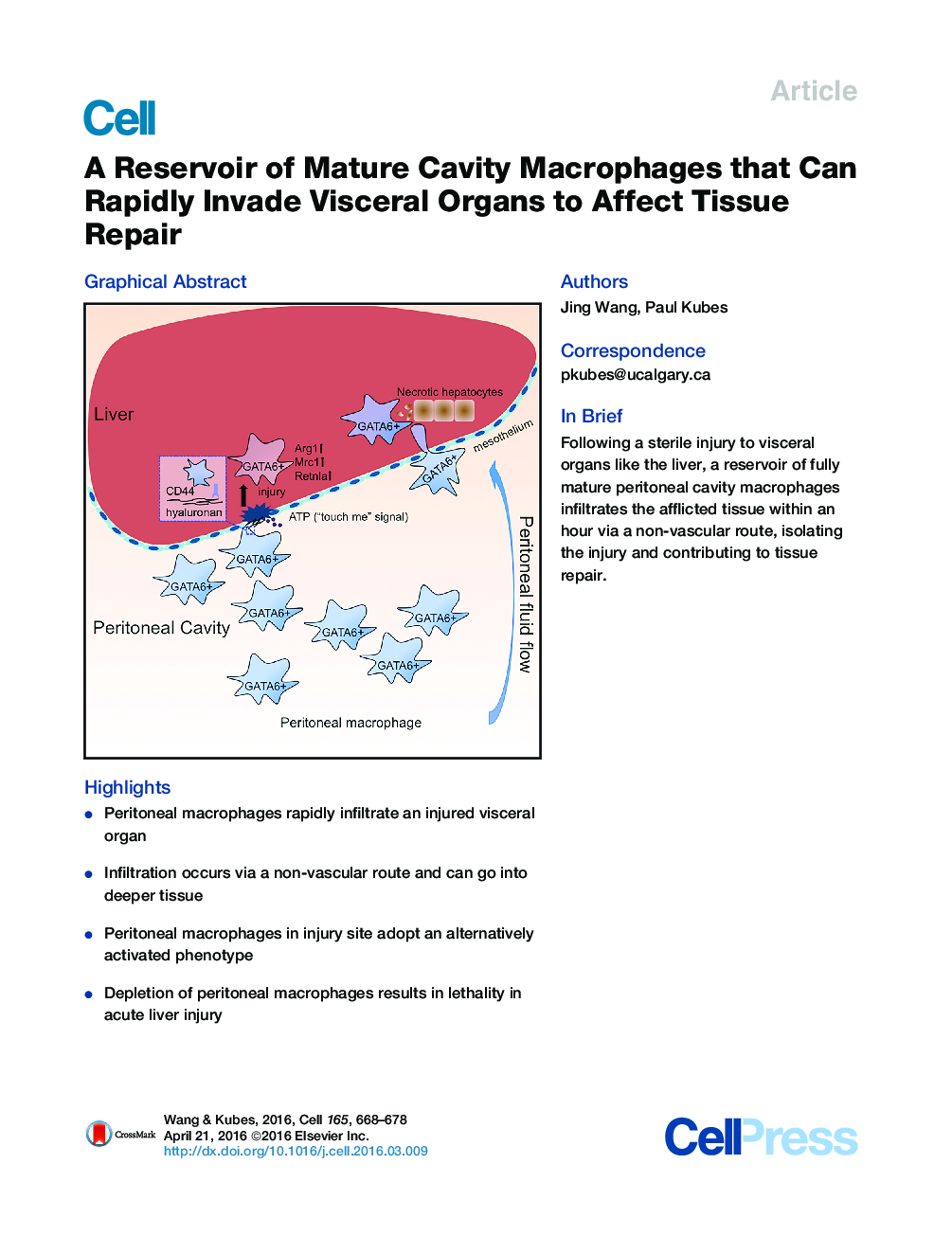| Article ID | Journal | Published Year | Pages | File Type |
|---|---|---|---|---|
| 2035069 | Cell | 2016 | 11 Pages |
•Peritoneal macrophages rapidly infiltrate an injured visceral organ•Infiltration occurs via a non-vascular route and can go into deeper tissue•Peritoneal macrophages in injury site adopt an alternatively activated phenotype•Depletion of peritoneal macrophages results in lethality in acute liver injury
SummaryA key feature of inflammation is the timely recruitment of leukocytes, including monocytes, from blood into tissues, the latter maturing into macrophages over a period of 2–3 days. Using multi-channel spinning disk microscopy, we identified a rapid pathway of macrophage recruitment into an injured organ via a non-vascular route requiring no maturation from monocytes. In response to a sterile injury in liver, a reservoir of fully mature F4/80hiGATA6+ peritoneal cavity macrophages rapidly invaded into afflicted tissue via direct recruitment across the mesothelium. The invasion was dependent on CD44 and DAMP molecule ATP and resulted in rapid replication and switching of macrophage toward an alternatively activated phenotype. These macrophages dismantled the nuclei of necrotic cells releasing DNA and forming a cover across the injury site. Rapid invasion of mature macrophages from body cavity with capacity for induction of reparative phenotype may impact altered tissues ranging from trauma to infections to cancer.Video Abstract To view the video inline, enable JavaScript on your browser. However, you can download and view the video by clicking on the icon belowHelp with MP4 filesOptionsDownload video (22961 K)
Graphical AbstractFigure optionsDownload full-size imageDownload high-quality image (208 K)Download as PowerPoint slide
